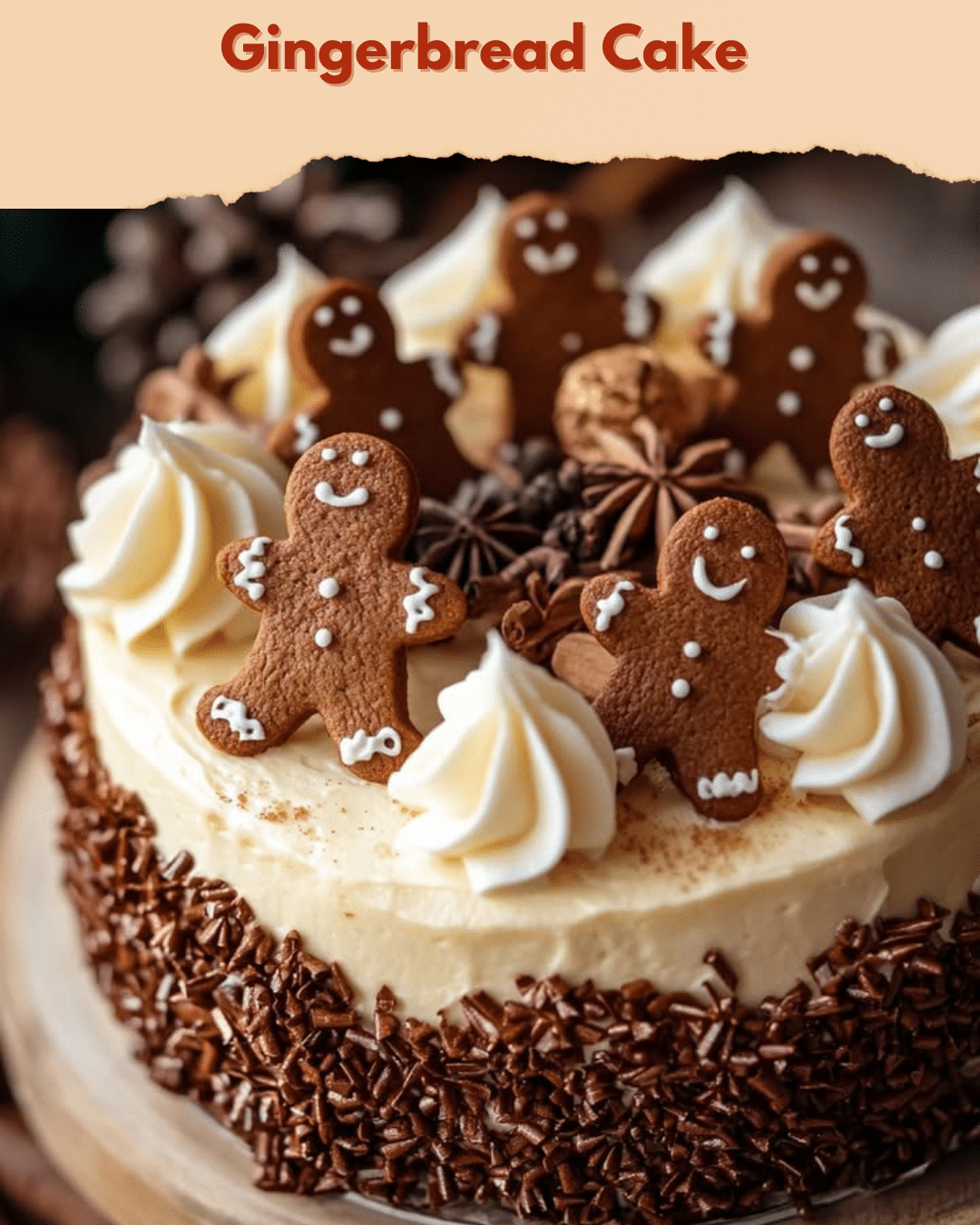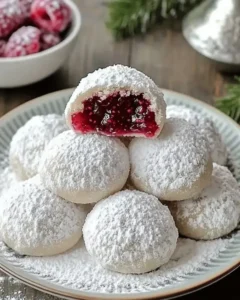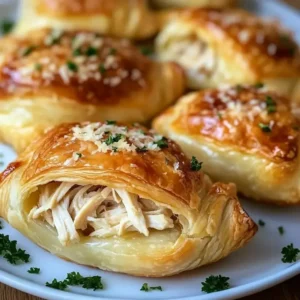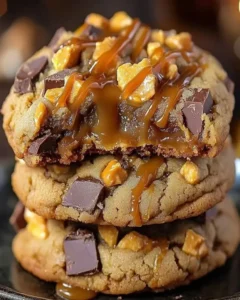Gingerbread Cake: A Warm Embrace of Spices
⚖️
Difficulty
Medium
⏲️
Prep Time
20 mins
🕒
Cook Time
35 mins
⏱️
Total Time
55 mins
🍽
Servings
8
Looking to fill your home with the inviting scents of holiday cookies and warm spices? Look no further than our delectable Gingerbread Cake. This classic dessert blends rich molasses, aromatic spices, and a hint of sweetness to create a nostalgic treat that is perfect for the winter months. Whether you’re entertaining guests or snuggling up with a hot beverage, this cake is for you. Imagine sinking your fork into its soft, moist crumb, infused with the unmistakable warmth of ginger, cinnamon, and cloves, and delight your senses with every bite.
Quick Recipe Highlights
Flavor Profile: This Gingerbread Cake offers a robust flavor profile combining the deep, intense sweetness of molasses with bright, zesty ginger and warm spices like cinnamon and clove. It’s a delightful balancing act that gives the cake its signature taste.
Texture: Expect a moist and slightly dense crumb that melts effortlessly in your mouth. The cake is soft yet holds up well, giving you a satisfying bite each time.
Aroma: The cake emits a heavenly combination of spicy ginger and earthy molasses, punctuated by cinnamon and cloves. It’s a smell that’s both comforting and festive.
Visual Appeal: A deep, dark brown hue sets the stage for this cake, promising the richness of flavors within. Dust it with powdered sugar or top it with whipped cream for an extra touch of elegance.
Skill Level Needed: Suitable for bakers with some experience, this recipe involves common techniques like mixing and baking, with a focus on balance in ingredient measurements to ensure the perfect cake texture.
Special Equipment: Having a hand or stand mixer is recommended to achieve the ideal batter consistency, along with a parchment-lined cake pan to facilitate easy removal post-baking.
Recipe Overview
Difficulty Level: This Gingerbread Cake is rated medium difficulty due to the precise measuring and mixing of ingredients required to balance its bold flavors. It’s straightforward enough for those familiar with basic baking processes yet still presents a fun, rewarding challenge.
Category: As both a dessert and a tea-time snack, this recipe fits comfortably in the realm of sweet baked goods, perfect for any occasion that calls for something comforting and heartwarming.
Cuisine: Rooted in Western traditions, Gingerbread Cake draws from a rich tapestry of culinary history, bringing together spices that have traveled across continents.
Cost: With ingredients like spices, molasses, and basic baking staples, this cake is budget-friendly. Many ingredients are likely already at hand in a well-stocked pantry, making it an economical choice.
Season: Best enjoyed during fall and winter, the warmth of this Gingerbread Cake complements colder weather beautifully, making it a festive complement to any holiday occasion.
Occasion: Serve this cake at holiday gatherings, potlucks, or as a cozy dessert on chilly evenings. Its classic flavor is universally appealing, making it suitable for a range of events.
Why You’ll Love This Recipe
Taste and texture appeal: The Gingerbread Cake’s dynamic taste profile is not only mouthwatering but unforgettable. The spicy and sweet elements harmonize to provide a flavor that’s both robust and comforting, while the cake’s texture is perfectly tender, offering a delightful culinary experience.
Convenience and preparation benefits: With a relatively simple preparation process, this cake doesn’t require any advanced techniques. The batter comes together quickly, baking in under an hour, which makes it perfect for last-minute gatherings or a spontaneous treat.
Nutritional advantages: Containing molasses, this cake includes several micronutrients like iron and calcium. Spices such as ginger and cinnamon also offer their own health benefits, from boosting metabolism to anti-inflammatory properties.
Social and entertaining value: Sharing a freshly baked Gingerbread Cake during holiday gatherings or cozy evenings can bring a sense of community and warmth. Its inviting aroma creates an atmosphere of hospitality and joy.
Cost-effectiveness and accessibility: Made with readily available ingredients, this Gingerbread Cake is affordable to prepare. It brings the elegance of a bakery-style dessert into your home kitchen without the high cost.
Historical Background and Cultural Significance
Origin story: The roots of gingerbread can be traced back to the Middle Ages when spices were becoming more commonplace in European cooking. Bakers would create spiced bread for royalty and special occasions, leading to the evolution of ginger-based treats.
Cultural importance: Over the centuries, Gingerbread has played a significant role in holiday traditions, especially in Western culture. It symbolizes warmth and the coming together of different generations and families during festive seasons.
Evolution of the recipe: Originally a denser, spicier bread, modern Gingerbread Cake has undergone many transformations. With changes in sweetener availability and baking techniques, it has morphed into the lighter, sweeter cake we cherish today.
Regional variations: Across different regions, Gingerbread is adapted into various forms, including cookies, loaves, and this cherished cake version. Each culture that adopts it infuses its unique touch, reflecting local ingredients and preferences.
Ingredient Deep Dive
Molasses: A staple in traditional American baking, molasses provides this Gingerbread Cake with its deep, caramel-like sweetness. Historically, it was a cost-effective sweetener and remains a nutritious ingredient rich in minerals.
Ginger: Both fresh and ground ginger carry a rich history in culinary traditions worldwide. Celebrated for its distinctive spicy, peppery flavor, ginger also boasts numerous health benefits, such as aiding digestion and providing anti-inflammatory effects.
Cinnamon: Known as an ancient spice, cinnamon adds warmth and complexity to recipes. It’s a common choice in a range of desserts, offering not only tantalizing flavor but also potential health benefits, including improved blood sugar control.
Cloves: These small, aromatic flower buds are powerful in flavor and a little goes a long way. Cloves add a distinctive piquancy to the cake while carrying potential benefits such as supporting liver health and helping regulate blood sugar.
Flour: All-purpose flour provides the necessary structure for this cake, holding together the rich flavors and ensuring a tender crumb. Be sure to measure flour correctly to avoid a dense, heavy product.
Eggs: Integral to both binding and leavening, eggs help achieve the desired cake texture, balancing the moisture and providing structure. Using them at room temperature will ensure better incorporation into the batter.
Common Mistakes to Avoid
Incorrect flour measurement can lead to a dry cake; always spoon and level your flour instead of scooping directly from the bag.
Overmixing the batter after adding dry ingredients can result in a dense, chewy texture. Mix until just combined to maintain a light, tender crumb.
Baking at an incorrect temperature might cause uneven rising or burning. Ensure your oven is preheated and use an oven thermometer if necessary.
Using expired baking powder or soda can affect the cake’s rise, leading to a dense texture. Always check the freshness of your leavening agents.
Forgetting to line the baking pan can result in difficulty removing the cake once baked. Parchment paper ensures easy release.
Adding too much molasses can overpower other flavors and make the cake overly dense. Stick to the recipe measurements for a harmonious blend.
Neglecting to sieve ingredients might cause lumps, especially with the spices. Sieving ensures even distribution and a smooth batter.
Opening the oven door too early or frequently will lower the temperature, impacting the cake’s rise. Wait until at least 75% of the baking time has passed before checking.
Essential Techniques
Proper measuring of flour involves fluffing the flour first, spooning it into the measuring cup, and leveling it with a knife. This simple technique prevents excess flour and keeps the cake moist.
Creaming butter and sugar until light and fluffy is essential for incorporating air and achieving the perfect batter texture. Use a stand or hand mixer at medium speed.
Gradually adding eggs is crucial for emulsion in baking. Mix each egg well before adding the next to maintain a smooth batter and avoid curdling.
Gently folding in dry ingredients ensures a tender crumb. Overmixing activates gluten, making the cake tough, whereas gentle incorporation keeps it light and airy.
Visual cues like a pulling away edge and a toothpick coming out clean indicate doneness. These signals help avoid under- or over-baking, ensuring a well-cooked cake.
Pro Tips for Perfect Gingerbread Cake
Let your dry ingredients sit at room temperature for an hour before baking to help them incorporate more smoothly.
Allowing the cake to cool completely in the pan will keep its shape and enhance flavor as the spices meld together with time.
For a deeper flavor, prepare the batter a day ahead and refrigerate. The rest allows spices to mellow and bloom, resulting in a richer cake.
Temperature preference plays a role in taste—some enjoy the cake slightly warm, others prefer room temperature, both offering different flavor highlights.
Use high-quality spices for the most authentic gingerbread flavor. Freshly ground spices are ideal, as they carry the strongest aromatic oils.
Line the cake pan with both parchment and a light spritz of cooking spray to ensure easy, clean release without damaging the cake’s surface.
Variations and Adaptations
Regional variations: Incorporate different spices for a unique take—nutmeg, cardamom, or star anise can add distinct regional flair to the traditional cake.
Seasonal adaptations: Add cranberry or pear compote as a topping for a fall and winter touch, offering an additional flavor dimension that complements the spices.
Dietary modifications: Swap out dairy milk with almond or coconut milk and substitute butter with coconut oil for a dairy-free version of this cake.
Flavor variations: Mix in some dark or semi-sweet chocolate chips for a delightful twist, complementing the spicy warmth of gingerbread flavor.
Texture modifications: Add sliced almonds or pecans to the batter for added crunch, or fold in cooked, diced apples for a moist, fruity version.
Presentation alternatives: Top the cake with a cream cheese frosting for added richness, or serve with vanilla ice cream for a festive dessert.
Serving and Presentation Guide
Plating techniques: Serve slices of Gingerbread Cake on a rustic wooden board or simple white plate to highlight its rich, dark color. This classic look enhances its homemade charm.
Garnishing ideas: Dust the top with powdered sugar for a snow-capped look, or drizzle with a lemon glaze for brightness and a gourmet touch.
Traditional accompaniments: Pair with a dollop of whipped cream or alongside applesauce for a traditional, comforting experience.
Modern serving suggestions: Serve as cupcakes or individual mini-loaves for a more contemporary presentation. These are perfect for parties or gifting.
Temperature considerations: Slightly warm slices in the oven before serving to revive the fresh-baked aroma and soft texture.
Portion control tips: Cut the cake into evenly-sized pieces using a serrated knife for clean slices and to manage portion sizes effectively.
Wine and Beverage Pairing
Wine pairings: A sweet Riesling or a rich Madeira complements the spiced flavors of Gingerbread Cake. Their sweetness and acidity balance the robust spices.
Non-alcoholic alternatives: Pair with chai tea or a spiced apple cider for a similarly warming experience, enhancing the spicy notes of the gingerbread.
Coffee/tea pairings: Serve with a robust coffee or rich black tea to cut through the spice and sweetness, creating a well-rounded flavor profile.
Temperature considerations: Both beverages and the cake can be served warm or at room temperature, customizing the festive feel.
Serving suggestions: Present beverages in rustic mugs or glass cups to highlight complementary tea or cider colors, enhancing visual appeal alongside the cake.
Storage and Shelf Life
Storage methods: Keep the cake in an airtight container to maintain freshness. Refrain from storing in the fridge as it can dry out the cake.
Temperature requirements: Store at room temperature for up to three days. If needed, freeze for longer shelf life, ensuring proper wrapping for freshness.
Container recommendations: Always use an airtight cake dome or storage container to prevent exposure to air, which can stale the cake.
Signs of spoilage: Look for any off-odors, mold, or signs of excessive drying as spoilage indicators. Baked goods often become stale rather than moldy if improperly stored.
Reheating instructions: Gently warm slices in the oven wrapped in foil at a low temperature for a freshly baked experience.
Freezing guidelines: Wrap individual slices in plastic wrap and then in foil, or store in a freezer-safe container for up to two months. Thaw overnight in the fridge.
Make Ahead Strategies
Prep timeline: Prepare the dry ingredients and wet components separately a day in advance and refrigerate. This approach minimizes same-day preparation time.
Storage between steps: After baking, allow the cake to cool completely before packaging for storage. Consider baking the day before serving to allow flavors to meld.
Quality impact assessment: Mixing the batter ahead enhances flavor, though baking should always occur closer to serving for optimal texture.
Assembly tips: If serving with a frosting or glaze, apply shortly before serving time to prevent sogginess or running frosting.
Reheating guidelines: Always reheat in an oven rather than a microwave for even warming without drying out. Low temperatures prolong the fresh-baked experience.
Fresh element additions: Add any fresh or perishable toppings, such as fruit or whipped cream, just before serving for peak freshness.
Scaling Instructions
Halving the recipe: Adjust all ingredients evenly to maintain balance. Baking time might reduce slightly, but check for doneness with toothpick test from the original time.
Doubling or tripling: Ensure the use of larger mixing bowls and pans. Distribute batter evenly and bake in two or more pans if necessary to prevent undercooked middles.
Equipment adjustments: Larger batches might require heavier-duty equipment such as a stand mixer to allow for adequate mixing without over-taxing handheld mixers.
Timing modifications: Anticipate longer baking times for larger quantities, but check frequently to prevent overbaking due to increased volume.
Storage considerations: Large batches should still follow original storage guidance, with the potential need for more containers or separate storing.
Nutritional Deep Dive
Macro breakdown: The Gingerbread Cake provides carbohydrates primarily from flour and sweeteners, offering energy-sustaining elements.
Micronutrient analysis: With vitamins and minerals like iron, calcium, and magnesium from molasses and whole grains, the cake brings subtle nutritional benefits.
Health benefits: Spices contribute anti-inflammatory properties, and molasses offers minerals, making this cake a tasty treat with underrated nutritional elements.
Dietary considerations: Best consumed in moderation due to sugar content, though more nutritious substitutions can help lessen this concern.
Portion analysis: Aim to cut the cake into even slices by weight rather than size for accurate portion control.
Weight management tips: Pairing the cake with healthy sides, like fresh fruit, can create a balanced dessert option while sticking with portion sizes.
Dietary Adaptations
Gluten-free: Replace all-purpose flour with a gluten-free baking blend while ensuring an appropriate adjuster such as xanthan gum is present to help bind the cake.
Dairy-free: Swap milk with plant-based alternatives such as almond or oat milk. Use coconut oil or vegetable oil in place of butter for similar results.
Vegan: Replace eggs with a flaxseed meal or chia seed-based substitute mixed with water to mimic the binding effects of eggs.
Low-carb: Substitute flour with almond flour or a coconut flour mixture, accounting for potential texture differences by allowing longer absorption time pre-baking.
Keto: Use a low-carb flour such as almond or coconut and incorporate a sugar alternative like erythritol for sugar substitution, keeping an eye on consistency and sweetness alterations.
Paleo: Adapt by using almond flour, coconut flour, and a blend of paleo-compliant sweeteners. Spices and molasses remain applicable with portioned adjustments.
Low-FODMAP: Limit molasses, opt for certified low-FODMAP sweeteners, and limit spice quantities that might irritate sensitive digestive systems.
Troubleshooting Guide
Texture issues: If dense, double-check flour measurements or avoid overmixing. A dry cake may need less baking time or added moisture in the batter.
Flavor balance: If too sweet or not sweet enough, adjust the sugar to molasses ratio. Adding a touch more salt can balance excessive sweetness.
Temperature problems: Ensure an even oven temperature with preheating, avoid opening the door frequently, and use an oven thermometer, if needed, to ensure accuracy.
Equipment challenges: Properly preheat and prepare baking pans with parchment to avoid uneven cooking or cake sticking issues.
Ingredient substitutions: Be aware baking chemistry is precise, so substitute similar items where possible and note potential impacts on texture and flavor.
Timing concerns: Overbaking can lead to dryness. Watch baked goods closely during the last five minutes and use cake-testing techniques to confirm readiness.
Recipe Success Stories
Community feedback: Many of those who have baked this cake share glowing reviews of its moist texture and perfectly balanced flavor. It’s often mentioned that the cake makes their homes smell like the holidays.
Variation successes: Some successful adaptations include adding dried cranberries or chopped nuts for additional texture. Substituting almond flour provided a gluten-free alternative without sacrificing taste.
Adaptation stories: Vegan bakers using flaxseed imitations for eggs noted the cake lost none of its signature softness, and reviewers highlighted its richness as exemplary.
Reader suggestions: Serving the cake warm with vanilla ice cream became a reader favorite variation, praised for its velvet softness.
Photography tips: Showcase the cake’s deep, rich color by utilizing a light surface and contrasting garnishes to allow the splendid presentation to shine.
Frequently Asked Questions
How do I store Gingerbread Cake to retain freshness?
Store it at room temperature in an airtight container for up to three days, or freeze individual slices for up to two months.
Can I substitute honey for molasses?
Yes, but it will alter the taste slightly and may affect the cake’s moisture content. Make adjustments to wet ingredients as necessary.
Is it necessary to use both baking powder and baking soda?
Yes, as both agents provide different types of leavening, whereas soda addresses acid balance; together, they achieve optimal structure and rise.
Why does my cake sometimes sink in the middle?
Oven temperature and timing variances commonly cause this. Ensure preheated ovens and avoid opening doors too early during baking.
Are there any alternative spices to include?
Absolutely, spices like nutmeg, star anise, or cardamom are great additions for providing varied warmth and cultural twists.
Can I decrease the amount of sugar?
Yes, you can reduce sugar slightly, but consider intrinsic taste balance given molasses contributes both flavor and sweetness.
What’s the best way to serve Gingerbread Cake during holidays?
Serve with a simple glaze or paired with warm beverages like cider or mulled wine for festive appeal.
Can I make this cake oil-free?
Yes, replace butter or oil with applesauce to maintain moisture levels, but note it may alter texture and density.
Is it possible to frost the cake in advance?
Frosting a day in advance is doable. Remember to store in the refrigerator to maintain frosting integrity, allowing to reach room temp before serving.
Does vanilla extract enhance the cake?
Adding vanilla can enhance sweetness perception and overall complexity, creating a more nuanced depth of flavor.
Additional Resources
Related recipes: Consider our Spiced Chai Cake or Pumpkin Loaf for similar seasonal charm and complementary flavors.
Technique guides: For those new to cake baking, our step-by-step Perfect Cake Baking guide offers tips from pre-baking to decoration.
Ingredient information: Our Spice Pantry Essentials series explores key spices found in this and other global dishes.
Equipment recommendations: From mixer reviews to bakeware suggestions, explore our Bake Your Best guide for informed decisions.
Seasonal variations: Our Harvest Baking Collection offers recipes perfect for transitioning between fall and winter, with festive twists.
Print
Gingerbread Cake
Description
A moist and spiced cake that captures the essence of the holidays.
Ingredients
For the Crust:
- 1 cup unsalted butter, softened
- 1 cup molasses
- 2 1/2 cups all-purpose flour
Instructions
1. Prepare the Crust:
- Preheat your oven to 350°F (175°C). Grease and flour a 9×9 inch baking pan.
- In a mixing bowl, cream together the butter and molasses until smooth, then gradually mix in the flour.
- Pour the batter into the prepared pan and bake for 30 minutes, or until a toothpick inserted into the center comes out clean.
Notes
You can customize the seasonings to taste.





